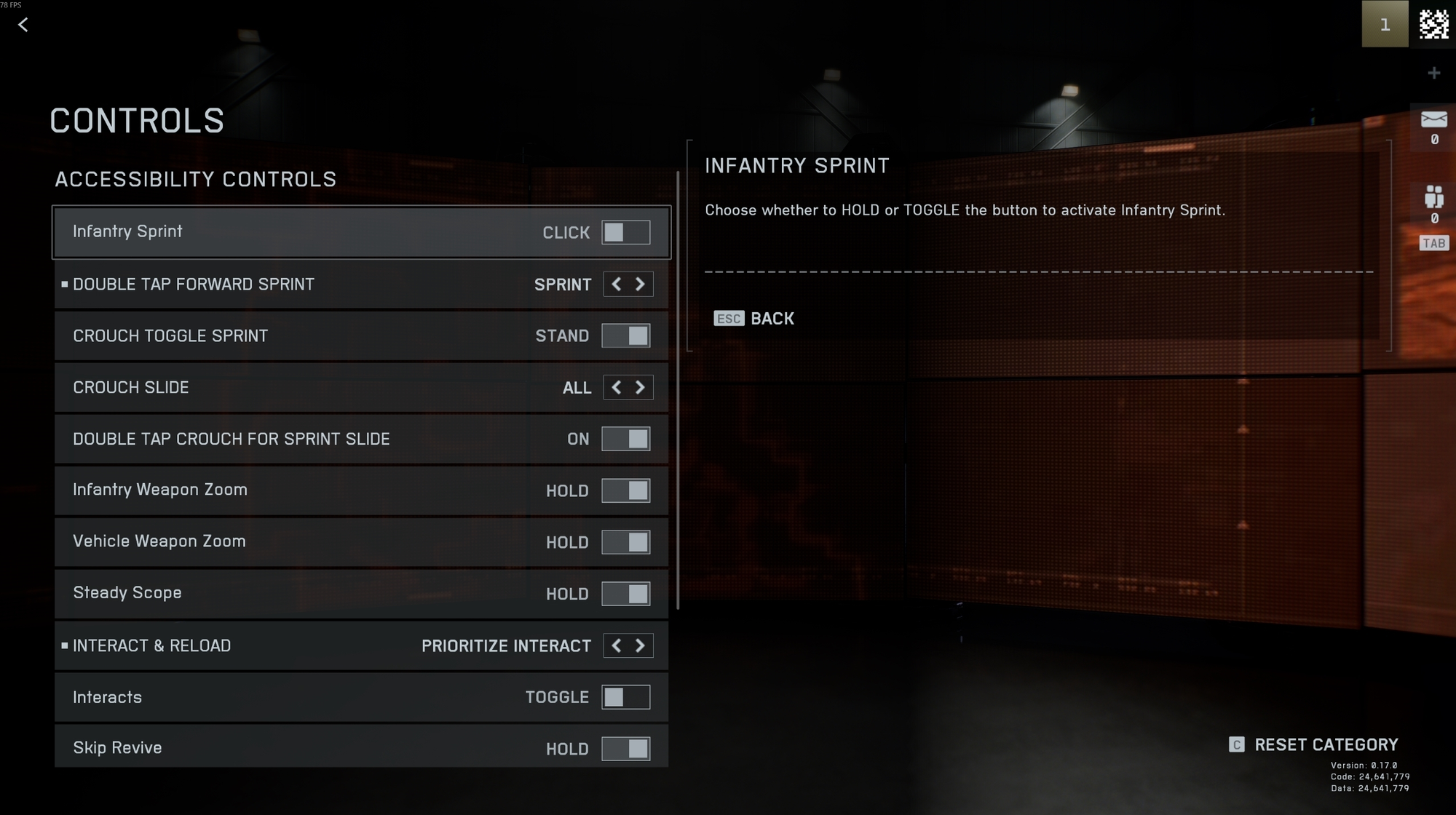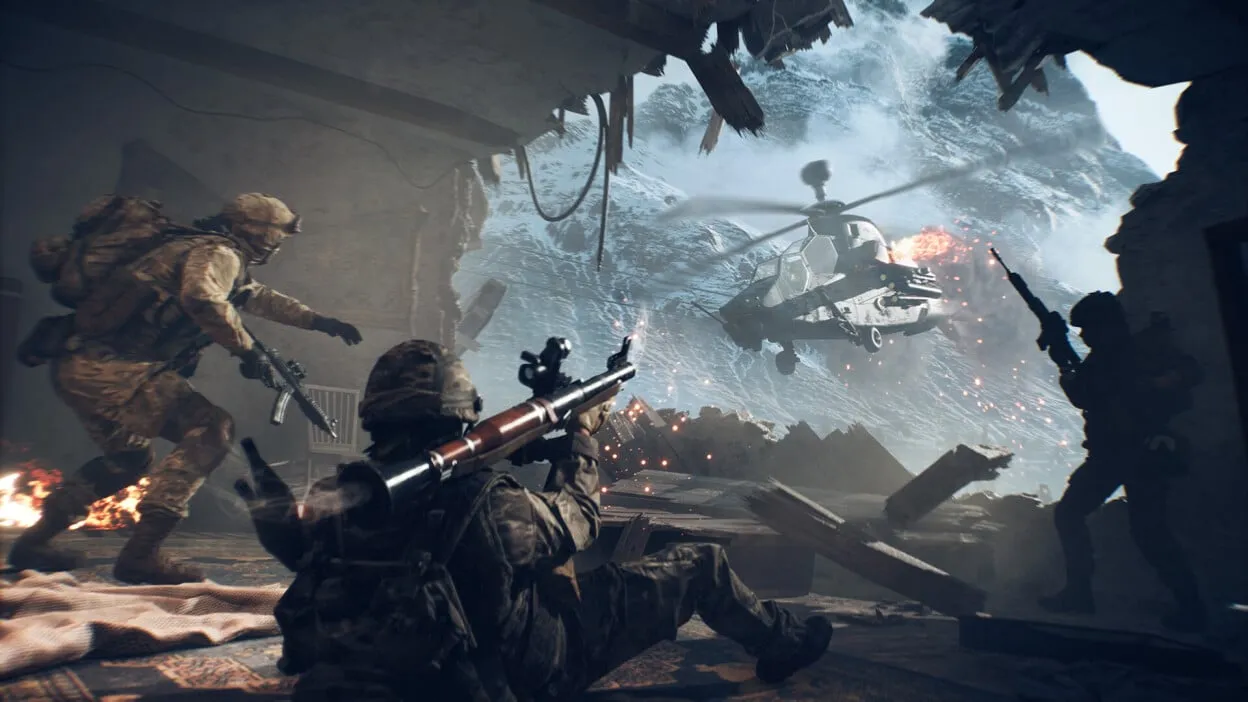Sliding is a sprint-only action. Build sprint speed, then double‑tap crouch to initiate the slide. While sliding, hip‑fire accuracy takes a brief hit, so treat it as a gap‑closing move or a way to enter cover, not a mid‑range gunfight tool.
How to slide in Battlefield 6 (default controls)
| Platform | Crouch button (default) | Slide input (default) |
|---|---|---|
| PC | Ctrl |
Double‑tap crouch while sprinting |
| PlayStation | Circle | Double‑tap crouch while sprinting |
| Xbox | B | Double‑tap crouch while sprinting |
Key points for consistency:
- Start the slide only after you’ve reached full sprint speed.
- Use a clean double‑tap; mistimed inputs can register as a crouch walk.
- Plan your slide exit; you’ll re‑raise your weapon as the animation ends.
Common mistakes
- Single‑tap crouch: Produces a standard crouch, not a slide.
- Holding crouch while sprinting: Triggers a prone dive instead of a slide, leaving you exposed in open areas.
- Insufficient speed: Trying to slide before reaching sprint speed cancels the move.
- Sliding into open space: Without adjacent cover or an exit path, you become easy to track and punish.

Change Battlefield 6 slide controls (Infantry Control Settings)
Adjust slide behavior in Settings > Controller or Settings > Mouse & Keyboard, then open Infantry Control Settings.
| Setting | What it does | When to use it |
|---|---|---|
| Slide | Assigns a dedicated slide key/button separate from crouch. | PC players who want a single, reliable slide input. |
| Crouch Slide (All/Toggle/Hold/Off) | Determines which crouch inputs result in a slide. | Controller users can make slides more predictable by limiting activation modes. |
| Double Tap Crouch for Sprint Slide (On/Off) | On requires double‑tapping crouch; Off permits a single tap while sprinting. | Turn Off on controllers for quicker slides; keep On if you want stricter input gating. |
Related movement settings that shape the overall feel:
| Setting | Recommended | Why |
|---|---|---|
| Infantry Aim Sensitivity | ~42–50 | Maintains aim control during slide entries and exits. |
| Sprint Toggle | Toggle | Frees a finger for timely crouch/slide inputs. |
| Landing Roll | On | Automatic fall mitigation and momentum preservation on drops. |
| Vault Over Sprint | On | Smoother obstacle navigation while maintaining pace. |
Controller and keyboard recommendations
- Controller: Disable Double Tap Crouch for Sprint Slide to slide with a single tap and dive by holding the button. If you prefer, switch to an alternate button layout that places crouch on the right stick and melee on Circle/B for easier thumb access.
- PC: Bind Slide to its own key to remove timing errors from double‑taps. Keep crouch and dive on separate, reachable keys.
Combat trade‑offs while sliding
Sliding briefly reduces hip‑fire accuracy, so the move is strongest at very short range or when you’re sliding into immediate cover. It’s not essential for every engagement. Use it to break lines of sight, cross small kill zones, or force a fast angle change—then stabilize to fire accurately as the slide ends.
Chain slides with rolls and mounting (advanced)
Battlefield 6’s movement system supports fluid chains. Understanding when to link a slide into a roll or a mount yields decisive positioning.
- Combat rolls: Trigger automatically on significant drops and can be used to carry momentum through a landing. You’re harder to hit during the roll, but you cannot fire until the animation completes—time it to reposition, not to trade shots.
- Weapon mounting: Step to a qualifying surface (window sills, barriers, vehicle hulls, sandbags, some terrain). Aim near the edge to mount. Expect a meaningful recoil reduction—around 40%—and steadier long‑range control.
Practical chains to try:
- Aggressive push: Sprint → slide into hard cover → mount on the edge → take the duel with improved stability.
- Tactical retreat: Break vision → sprint → roll around a corner to disrupt tracking → sprint away.
- Flank setup: Corner peek for info → wide sprint route → slide into the off‑angle → mount for the finishing shots.
Map‑specific guidance for sliding
- Urban (close quarters): Use sprint slides to enter rooms and snap to cover; lean and corner‑peek before committing.
- Open terrain: Favor rolls for unpredictability during traversals; slide only when it ends at cover you can hold.
- Mixed layouts: Shift between techniques as the fight moves; climb, drop, slide, and mount in short, purposeful bursts.
Practice drills to build consistency
- Slide timing: In the range, practice sprint → slide transitions until your double‑tap cadence is consistent and you’re ready to fire on exit.
- Movement chains: Set a simple path using map geometry. Link slide → roll → mount without stalling.
- Applied reps: Run AI engagements while incorporating slides only when they end at cover or point‑blank ranges.
Note: Spend at least 15 minutes warming up movement before matches. Repetition locks in timing.
If you dislike sliding
Sliding is optional. Battlefield 6 allows you to tune inputs so that a slide requires stricter timing or an explicit button, and you can favor cover‑to‑cover positioning without using it. Previous Battlefield entries leaned on shorter, cover‑first slides, and that approach still works here—use the mechanics that support your playstyle.
Master the input timing, map the controls you can hit reliably under pressure, and only slide when it secures cover or a high‑percentage fight. Vary your routes to avoid becoming predictable, and build muscle memory in short practice blocks so the move is available when you need it—and absent when you don’t.


